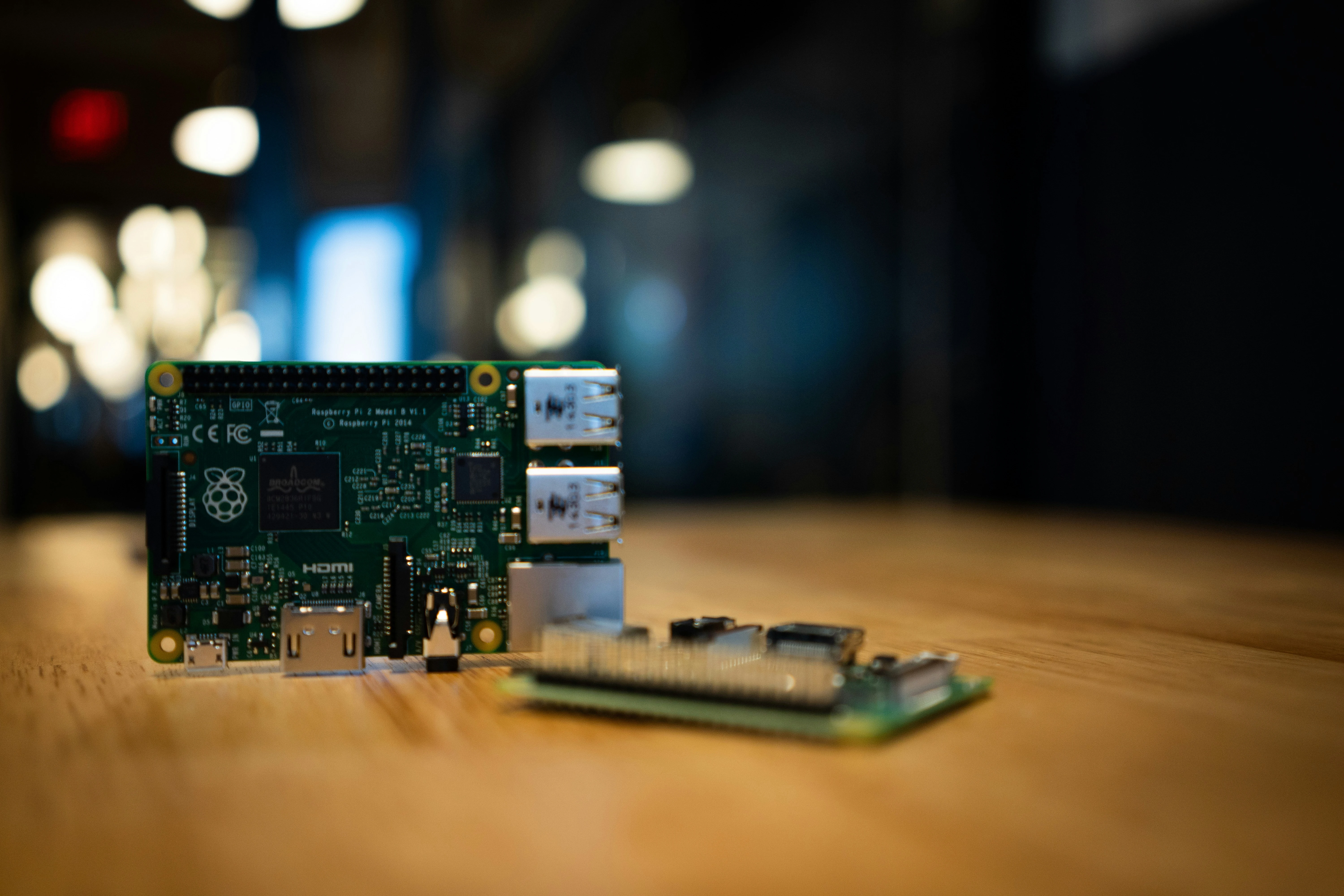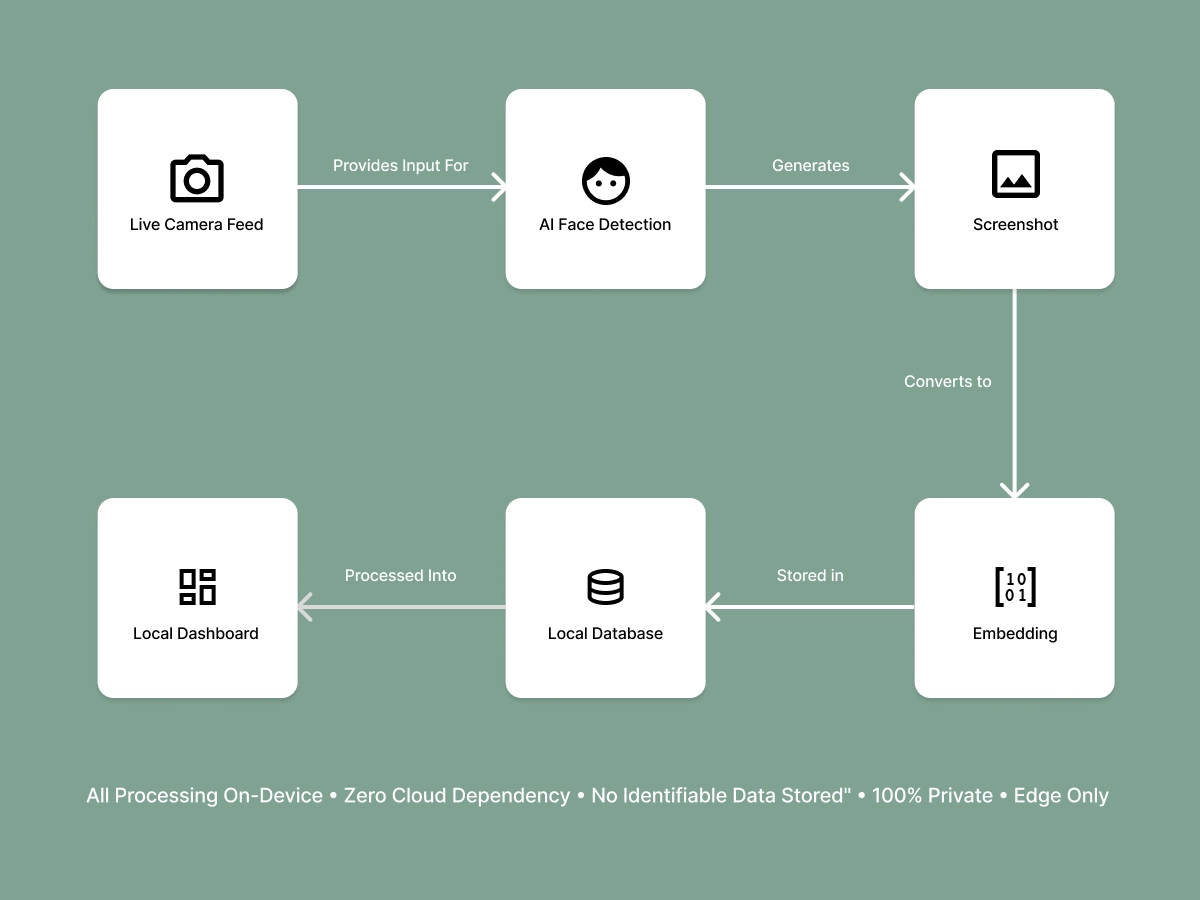Context & Goals
Project foundation and objectives
Retailytics AI addresses a gap in retail analytics: measuring in-store traffic without high costs, unreliable methods, or human error. As Founder, I built an AI system that automates visitor tracking and analytics, providing retailers with KPIs for unique visitors, conversion rates, and customer demographics. This bridges digital and physical retail, enabling data-driven decisions for operations, marketing, and customer experience.
Eliminate Counting Errors
Achieve 97% accuracy in unique visitor identification, removing duplicate counts, staff exclusion, and human error from the equation
Enable Real-time Decisions
Provide visibility into traffic patterns, conversion rates, and demographic insights for operational agility
Bridge Digital & Physical
Connect in-store analytics with digital marketing spend to measure true omni-channel performance and ROI
The Challenge
Key problems to solve
Core Problem Statement
Retail stores struggle to accurately measure foot traffic and understand visitor behavior. Traditional counting methods produce duplicate counts, miss visitors, and provide no context about customer journeys or engagement patterns within the store.
User Challenges
- Turnstiles produce inaccurate counts and miss many visitors
- Hand counting leads to human errors and inconsistent data
- Inaccurate visitor counts due to duplicate tracking
- No visibility into customer movement patterns within store
- Unable to measure dwell time in specific zones
- Difficulty correlating foot traffic with sales conversion
Business Impact
- Poor staffing decisions due to inaccurate traffic predictions
- Ineffective store layouts without understanding customer flow
- Wasted marketing spend without knowing visitor patterns
- Lost opportunities to optimize peak hour operations
- Data privacy concerns with traditional tracking methods
- Data security risks from storing personally identifiable information
Product Strategy & Process
Implementation and key features
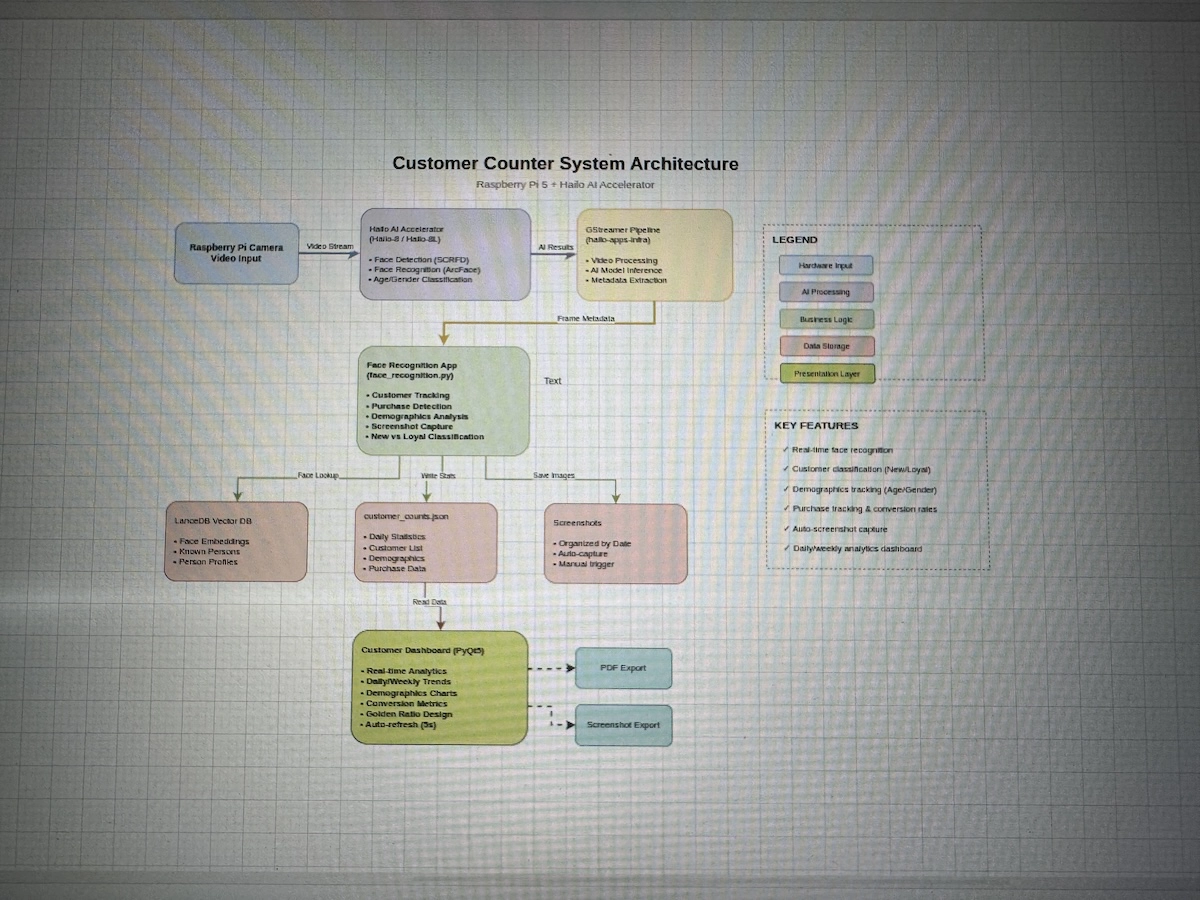
Market Gap Analysis
Analyzed existing solutions and identified gaps: Thermal imaging ($15k-$40k/entrance) and turnstiles ($3k-$10k/unit) are expensive with limited insights. 3D stereo vision ($2.5k-$7k/camera) lacks demographic data. Wi-Fi/Bluetooth tracking ($800-$2.5k/probe) has low accuracy. Cloud-based AI video analytics ($100-$500/camera/year) raises privacy concerns and requires subscriptions. Hand counting and manual methods introduce human error, leading to missteps in staffing decisions, wasted marketing spend, and missed revenue opportunities. DIY solutions require AI/ML expertise, making them infeasible for retail businesses needing out-of-box deployment. Validated need for an affordable, privacy-first edge solution with high accuracy and analytics without recurring fees.
Target Market
Small to mid-sized retailers seeking affordable, privacy-compliant visitor analytics without enterprise costs or technical complexity. Focus on brick-and-mortar stores in Canada requiring PIPEDA compliance, with expansion to privacy-conscious markets globally.
Competitive Positioning
Retailytics AI combines edge-based processing (eliminating privacy risks and cloud fees) with 97% accuracy and analytics at a fraction of traditional system costs. Unlike expensive hardware solutions or privacy-invasive cloud platforms, we deliver insights with deployment and zero subscriptions.
Product Vision
Helping retailers make better decisions with accurate, private customer insights.
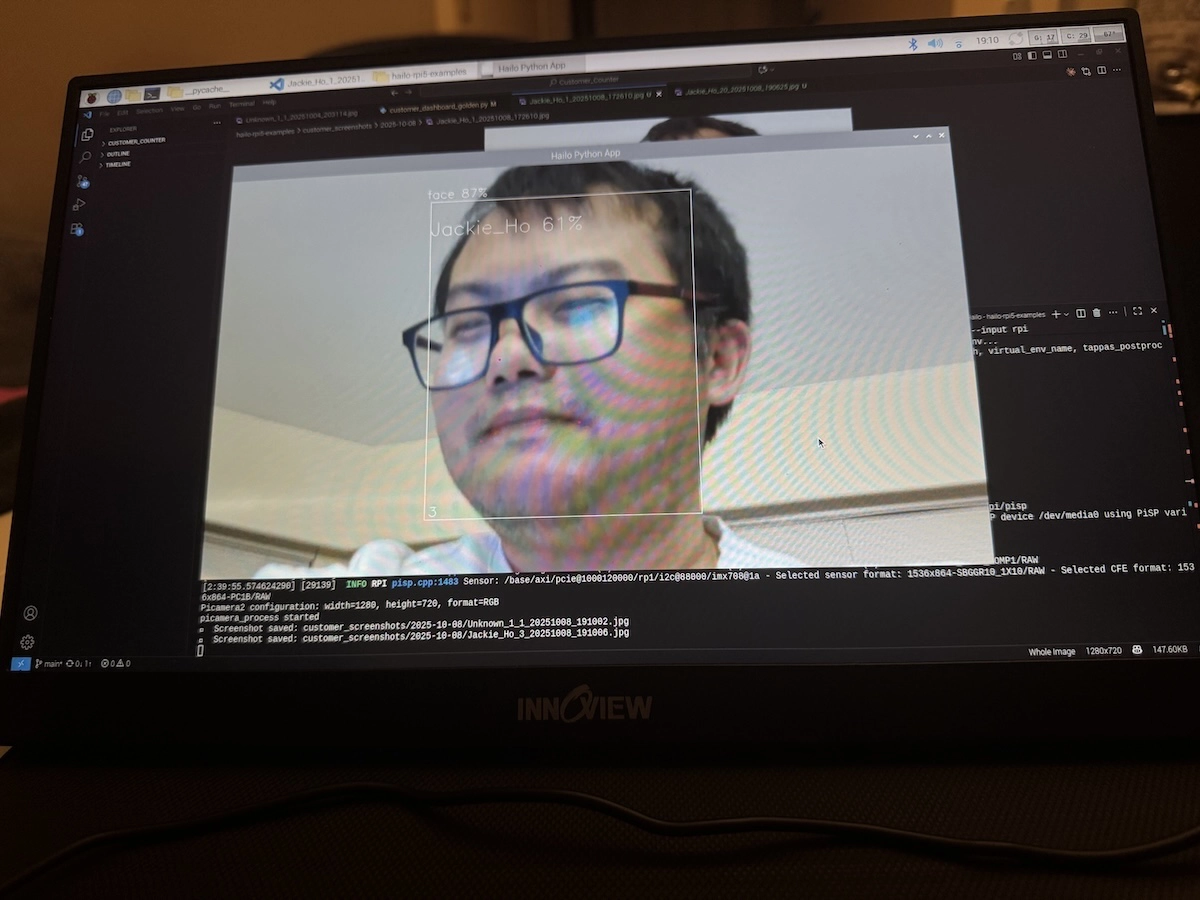
Training the facial recognition model to detect and identify my face.
Edge AI Research
Researched edge computing frameworks and on-device AI processing capabilities to ensure the solution could run independently without cloud dependencies. Evaluated performance constraints, model optimization techniques, and hardware requirements to deliver analytics while maintaining 100% data security and 0% downtime. Researched PIPEDA requirements to ensure compliance with Canadian privacy regulations for biometric data handling.
Model Evaluation
Researched and evaluated facial detection models, pose estimation, and segmentation techniques for retail visitor tracking applications. The detection pipeline required two stages: first, person detection to identify human presence, and second, facial detection to locate faces on detected persons. Models needed to be in .hef format to optimally use the AI HAT chip while respecting Raspberry Pi hardware limitations.
Privacy by Design
Implemented privacy-first architecture where detected faces are immediately converted to embeddings (numerical representations) rather than storing raw images. This approach removes identifiable image data while enabling unique visitor tracking through mathematical similarity matching. Combined with edge processing and zero cloud dependencies, ensures complete PIPEDA compliance and 100% data security.
UI Technology Tradeoffs
Evaluated Web App vs QT vs Rust for the user interface. Web App (HTML/CSS/JavaScript) offers cross-platform compatibility and easy updates but requires a browser and has higher resource overhead. QT (Python/C++) provides native desktop performance, offline capability, and better integration with Python AI pipeline, but requires platform-specific builds. Rust (Tauri/Slint) delivers the best performance and smallest footprint, but has a steeper learning curve and longer development time. Selected QT for Python integration, native performance, and faster development cycle while maintaining offline-first architecture.
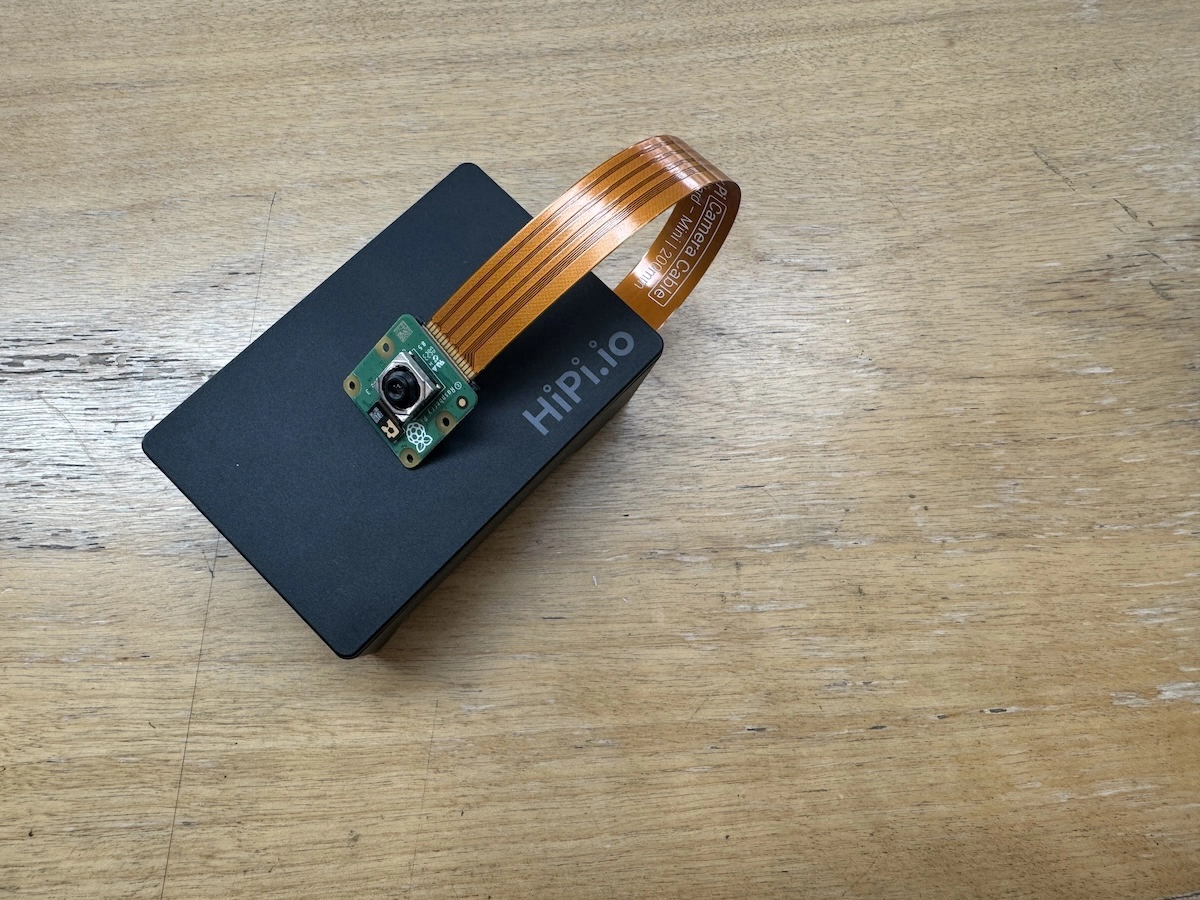
Camera Selection
Evaluated camera options for facial detection in retail environments. Requirements included minimum 1080p resolution for accurate facial detection, low aperture for better low-light performance, and wide-angle lens to maximize entrance coverage. Currently prototyping with Raspberry Pi Camera Module which meets these baseline specifications for proof of concept deployment.
Edge Device Requirements
Prototyped using Raspberry Pi with AI HAT to identify edge computing capabilities and performance constraints. Evaluated AI chips and computing performance metrics (TOPS - Tera Operations Per Second) to balance computational power with cost and power consumption for retail deployment.
Deployment Setup
Designed installation protocols for optimal performance in retail environments. Camera positioned at head height to maximize facial detection accuracy while minimizing occlusion from crowds. Established network configuration requirements and system initialization procedures to ensure reliable operation across different retail layouts and traffic patterns.
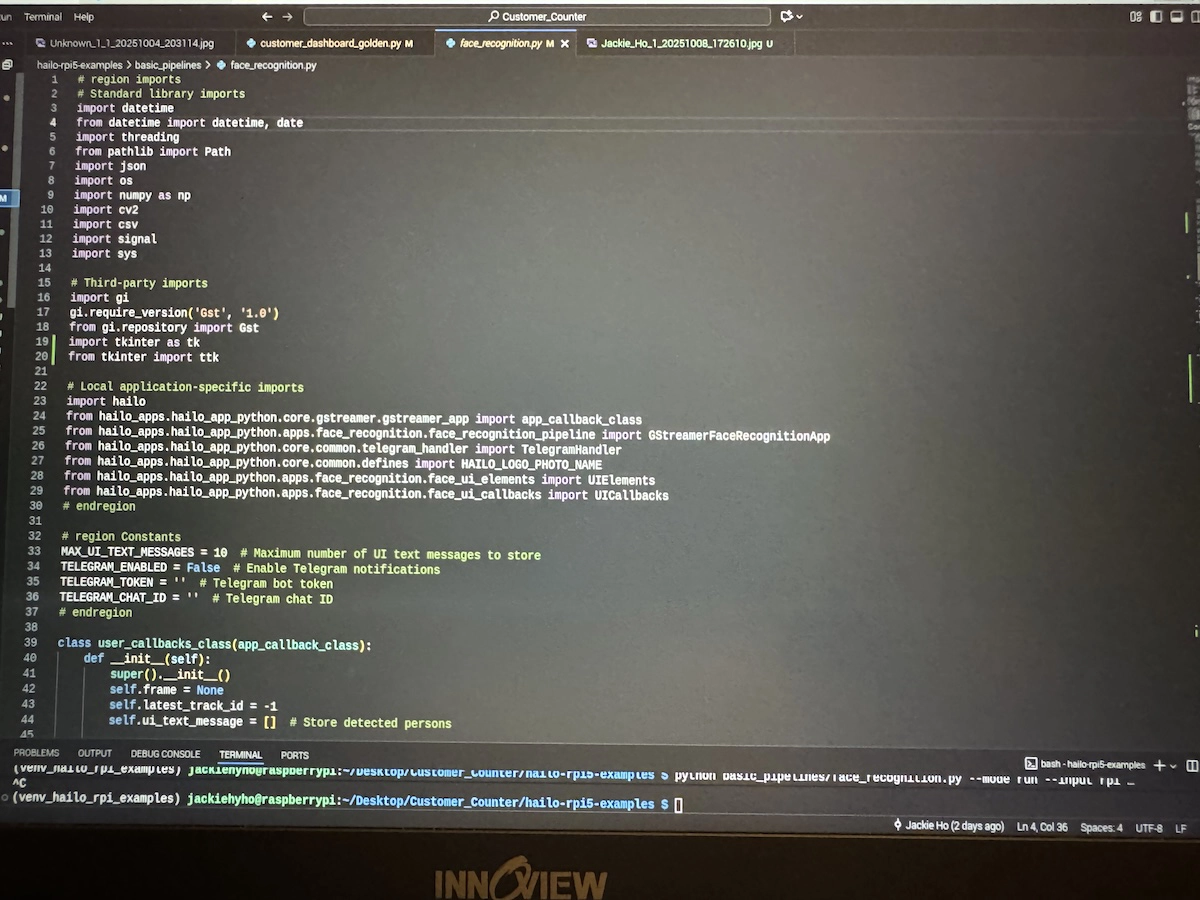
Python Desktop Application
Developed the Python application for video processing, facial detection, and visitor tracking using QT for the user interface and QSS for styling.
Web Dashboard
Created a web-based analytics dashboard using JavaScript to visualize visitor metrics, demographics, conversion rates, and traffic patterns.
System Integration
Integrated the edge AI processing pipeline with the dashboard interface, ensuring data flow from camera input to analytics output without cloud dependencies.
Impact & Results
Success metrics and outcomes
Retailytics AI transformed how retail stores measure and understand foot traffic, leading to staffing efficiency, optimized store layouts, and conversion rates.
Accuracy Rate
Unique visitor identification accuracy
Data Security
Data privacy and security
Down Time
No network required for operation
Key Learnings
Key insights and takeaways
Design Insights
- • Visualizations need to balance responsiveness with readability
- • Privacy concerns require transparent communication about data handling
- • Heat maps and journey visualizations are more intuitive than numerical data
- • Mobile dashboards are needed for store managers on the sales floor
Product Insights
- • Accuracy builds trust - even 95% isn't good enough for visitor counting
- • Integration with existing POS systems unlocks conversion analytics value
- • Predictive insights more valuable than historical reporting alone
- • Multi-location retailers need comparative analytics across stores
